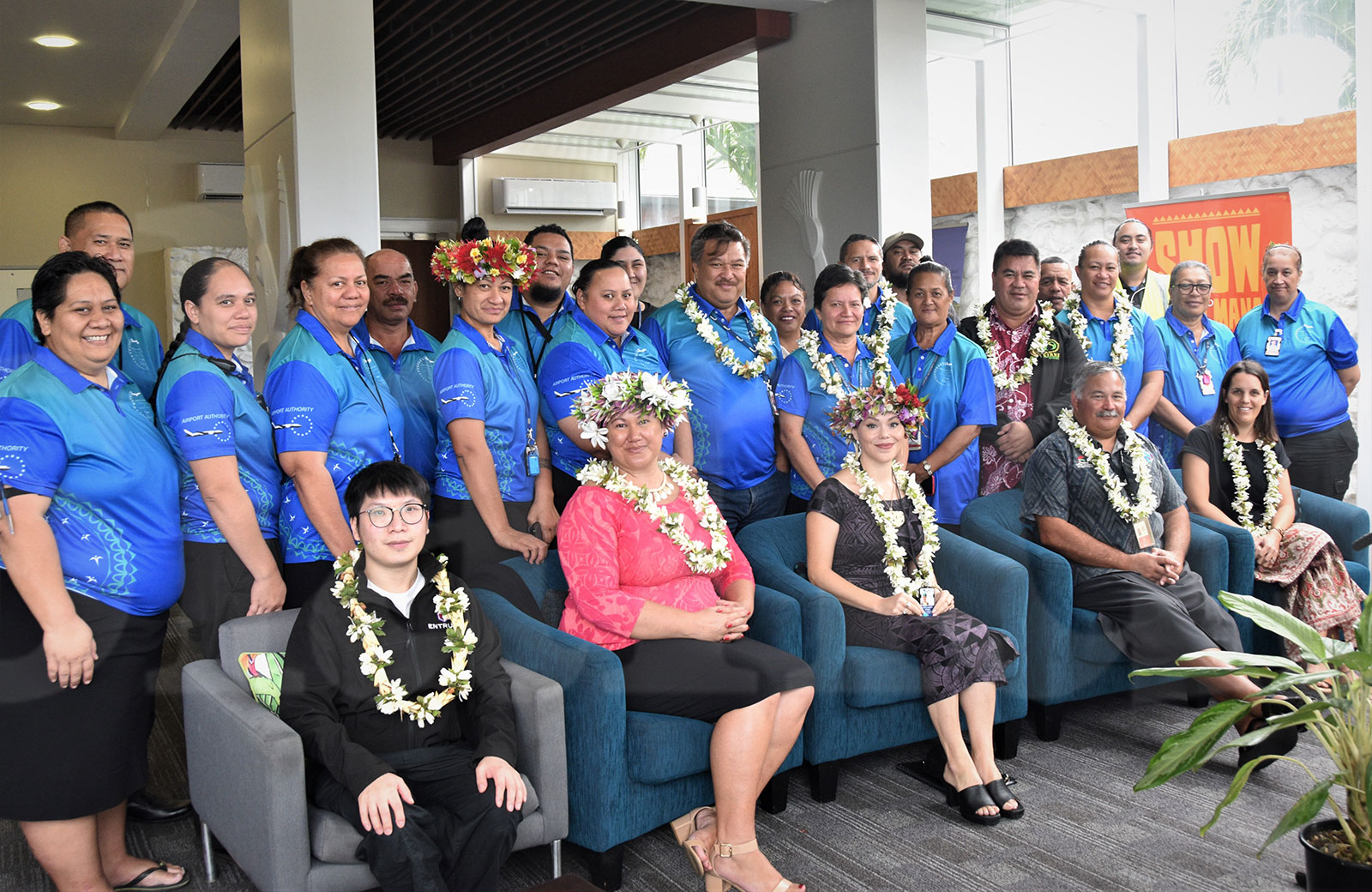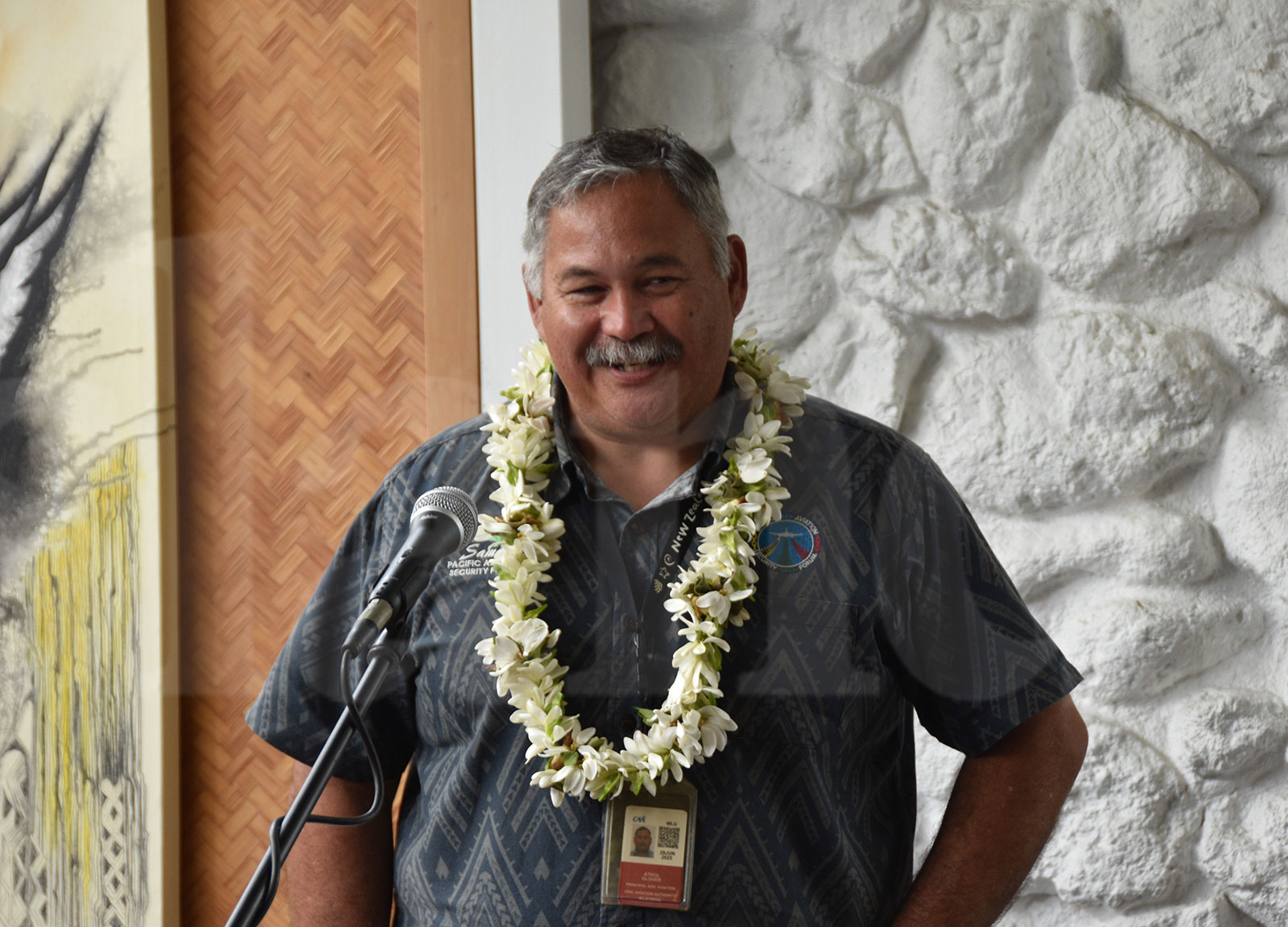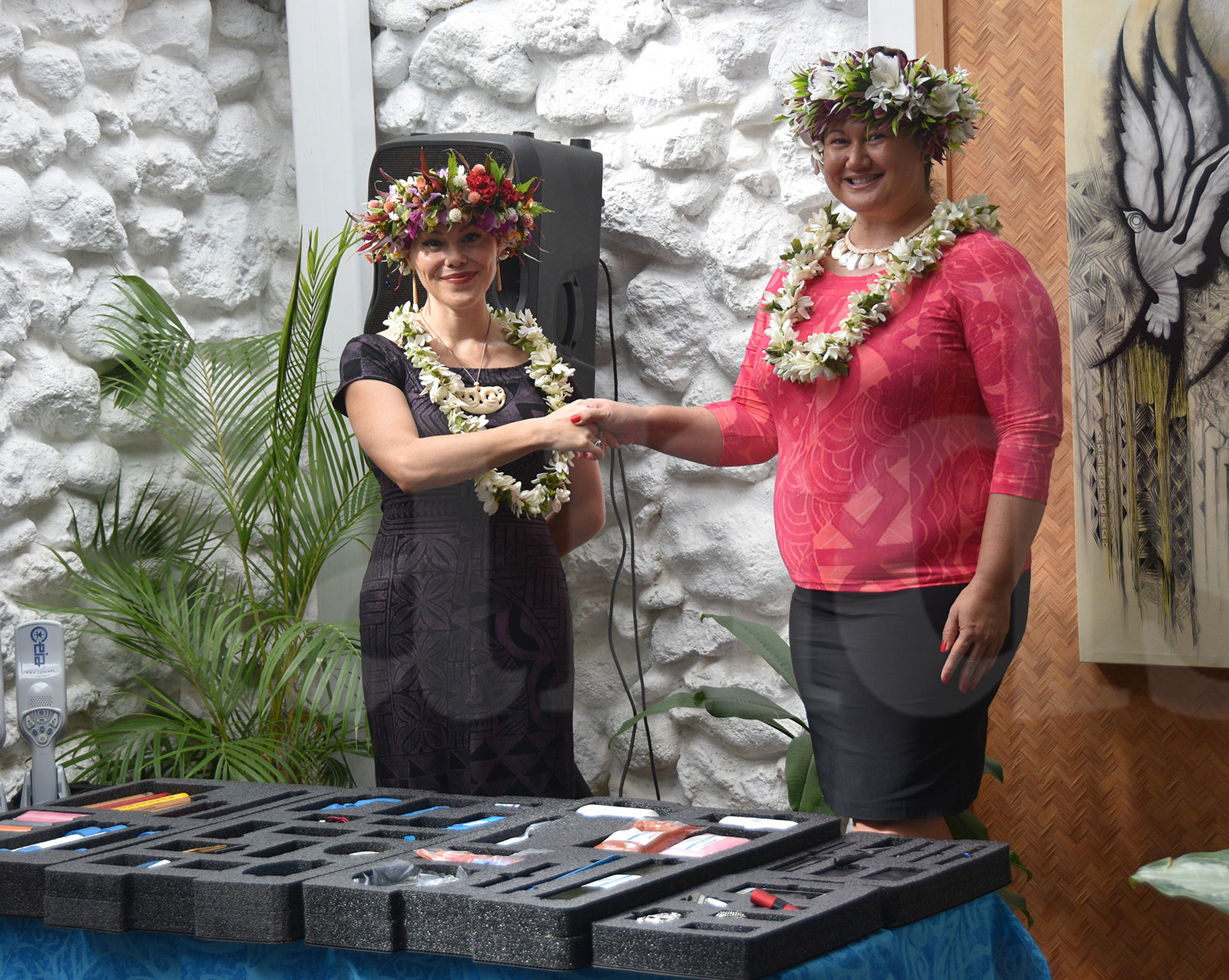New Airport ID cards for improved safety, security
Tuesday 6 June 2023 | Written by Supplied | Published in Economy, National

Airport Authority Cook Islands (AACI) staff, Nancy Matapuku, deputy chairperson board of directors AACI, New Zealand High Commissioner Tui Dewes and Athol Glover, principal advisor Aviation Security (Pacific Islands) at the handover ceremony. MELINA ETCHES/23060220
Safety and security are paramount to Airport Authority Cook Islands (AACI) who have introduced the new identification (ID) card system that will not only strengthen the airport’s defences but also enhance operational efficiencies within its organisation.
Nancy Matapuku, deputy chairperson of the Airport Authority board, said the cutting-edge technology would ensure a higher level of security clearance for all visitors, workers, and travellers passing through Rarotonga’s international airport.
The new system incorporates advanced biometrics, printing high-quality laminated IDs, and authorising access to restricted areas, Matapuku said.
“A vital step forward in safeguarding our infrastructure, our people, and our country.”
The first installation of a modern/computerised ID card system was undertaken in 2004. Prior to that, ID cards were manually produced.
Matapuku explained the new ID cards have protective layers to protect the card which has a holographic image overlay.
“This cannot be altered or tampered with.”

Athol Glover, principal advisor Aviation Security (Pacific Islands) -Civil Aviation Authority of New Zealand. MELINA ETCHES/23060221
The second security feature is a laminate/polyester film overlay which covers the surface of the ID card in order to protect the card from damage due to daily use and wear and tear.
“The holographic feature is a new requirement by ICAO (The International Civil Aviation Organization) for the purpose of visually authenticating an airport ID card, thus enhancing airport security,” Matapuku said.
The new ID’s reporting features would improve the Airport Security Service around stock/financial reporting and validation of ID system, she said.
Chief airport security officer, Oscar Story-Tapoki and her dedicated Security Service Team will make “excellent” use of the new system, notes Matapuku.
All airport ID card holders will be issued with the new ID. The older cards will be taken out of circulation and destroyed.
This project is a wider regional activity funded by the New Zealand Ministry of Foreign Affairs and Trade (MFAT) to support the safety and security of airports across the Pacific.
The handover ceremony of the new ID card system equipment and training aids from the New Zealand High Commission to Airport Authority was held last Friday at the Airport VIP Lounge.
At the handover, New Zealand High Commissioner to the Cook Islands, Tui Dewes said the ID card upgrade “will serve to further enhance the integrity of your security system here at the airport”.
“The main thing that we need to understand is that we are part of that global environment. The new airport ID cards are an enhancement and improvement for the Cook Islands which is an international requirement to enter into restrictive areas of an airport – upgrading from the existing to the new.”

Nancy Matapuku, deputy chairperson board of directors Airport Authority Cook Islands, presents New Zealand High Commissioner Tui Dewes with the first new airport security ID cards. MELINA ETCHES/23060222
Training aids, improvised explosive devices and other threat items that are not permitted on board a plane or at an airport were also handed over to Airport Authority by Athol Glover, principal advisor for Aviation Security (Pacific Islands) which provides aviation support to 11 Pacific Island countries.
“These are training aids that are going to assist our Airport Authority aviation security staff to identify images and interpretation of what things actually look like in passengers’ bags,” said Glover.
“With our people scanning these things through an x-ray machine you have three to five seconds to identify contents of a person’s bag, so you are asking quite a bit from them.
“We try to encourage people to don’t rely on technology to do these things for you, as soon as you’ve got that doubt in your mind, check it out.”
Glover says nine Pacific countries (13 airports) will receive brand new x-ray machines – walk through metal detectors and explosive trace detection machines. New Zealand is providing seven years of service maintenance and support.
“We will also take the old equipment out and return it back to New Zealand because the Pacific Island countries don’t have the ability to dispose of radioactive material.
“Once the installation is done, we will remove all of the old stuff and return it and dispose of it properly.”
Airport Authority would like to express gratitude to the New Zealand High Commission and Civil Aviation Authority of New Zealand for their support and generous contribution over the last 50 years and beyond.




































